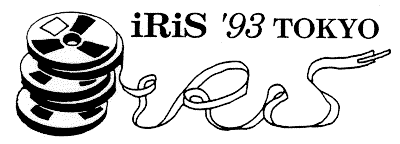
| Akira Sugiura | CRL/Tokyo |
| Taizoh Yoshino | CRL/Tokyo |
| Hiroo Kunimori | CRL/Tokyo |
| Kuniaki Uchida | CRL/Kashima |
| Michito Imae | CRL/Kashima |
| Shin'ichi Hama | CRL/Kashima |
| Yukio Takahashi | CRL/Kashima |
| Kosuke Heki | CRL/Kashima |
| Hiroshi Takaba | CRL/Kashima |
| Koichi Yokoyama | NAO/Mizusawa |
| Noriyuki Kawaguchi | NAO/Nobeyama |
| Makoto Murakami | GSI |
| Masaki Ejiri | NIPR |
| Daishiro Okihara | SONY |
| Makoto Nakayama | NEC |
Abbreviation:
CRL: Communications Research Laboratory
NAO: National Astronomical Observatory
GSI: Geographical Survey Institute
NIPR: National Institute of Polar Research
After showing the brief description of the each item, discussion was made freely. (See the description in this issue.)
Murakami: Excess path delay correction by water vapor is discussed in 1cm, while 3cm error is discussed in ionospheric correction by single band VLBI. How can I understand these differences?
Takahashi: Delay induced by water vapor is important to establish the precise global coordinate. Single band VLBI is being made in the domestic experiment using the mobile station. In this case, measurements of the vector between stations are more important than to define the frame. So 3cm is acceptable.
2-(2) Technical Development Plan in 1992
The plan for this year is reported. Most of them are introduced in the "Technical topics" in this issue.
2-(3) Report from each institution
Yokoyama (NAO/Mizusawa): (The GPS activity shown at the last IERS Workshop in Paris is described.) Sharing the work between VLBI and GPS should be considered again. Upgrading plan of IRIS-P network will be explained later.
Kawaguchi (NAO/Nobeyama): Less expensive VLBI Data Acquisition Terminal is developed for wider use. A ground terminal for VSOP is now under development. In the design, A/D converter to be developed by SONY is supposed to be used. 4Gbps burst sampler is being made.
Murakami (GSI): Authority of 26m antenna in Kashima will be soon transferred to GSI. GSI will participate in DOSE project using 26m antenna. 2.4m antenna was completed for mobile station, which will be tested next at Kanozan station. At Minamitori Island (Marcus), VLBI reference point by CRL and SLR reference point by JHD are connected by GPS measurement. MDX (Metropolitan Diamond Cross) experiments were made with CRL. 5m antenna in Tsukuba will be transported to Omaezaki (Shizuoka) station in October. VLBI data analysis software in Engineering Workstation was introduced from GSFC.
Ejiri (NIPR): Budget of the Antarctic experiment is applied for. Resolution made at the last TDC meeting should be a great help. Feasibility for 22GHz VLBI in Syowa is also studied.
Okihara (SONY): 32Mbps A/D converter is being developed. As an interface to the K-4 Data Recorder. RS-232C and RS-485 are available as well as RS-422.
Nakayama (NEC): For the 22GHz VLBI at Syowa, performance of the antenna and radome were studied. It must be possible to adopt 22GHz facility.
DISCUSSION
Yoshino: If the 22GHz VLBI become possible at Syowa, which station will be a partner?
Kawaguchi: The VLBI station in South America is a candidate.
Heki: & According to Dr.Yokoyama, VLBI observation should be made to monitor a long term variation of the Earth rotation, while GPS observation is enough for a short term variation. If the GPS result is assured in observing Earth rotation, how often should the VLBI observation be made?
Yokoyama: It is important to continue VLBI observation for a long term. But it does not mean that much less frequent observation is enough.
2-(4) IRIS-P Promotion Plan
Yokoyama: (He explained the meaning of the following proposal.)
The Upgrading Plan of the VLBI IRIS-P Network
for Monitoring the Earth's Rotation
July 22. 1992
The National Astronomical Observatory
The Communications Research Laboratory
Space techniques like very long baseline interferometry [VLBI] has brought about a drastic break-through in the study of the earth's variable rotation, and the observable results have contributed not only to the scientific development of astronomy, geodesy and geophysics, but also to space development. However, the VLBI data which have so far benefited users have been those produced mainly by the VLBI IRIS-A [International Radio Interferometric Surveying, Atlantic] network composed of the stations in USA and Europe. The data from the IRIS-P [Pacific] network, whose observational frequency is low and whose correlation completely relies upon US facilities, have not made enough contributions. Thus it is now internationally required that Japan play a leading role in operating the IRIS-P network and produce significant data. To accomplish this, the Japanese VLBI group has come to an agreement to endeavor to equip all IRIS-P stations with the next-generation K-4 recording systems developed in Japan, and to establish a data acquisition system covering all necessary procedures, such as, scheduling, correlation and analysis. Operational targets will be focused on the detection of rapid changes in the earth's rotation with high accuracy. This will help improve our knowledge of the physi cs of the earth's deep interior and the mechanism of global changes.
Any assistance and advice will benefit NAO and CRL to proceed in their plan composed of the following items:
2-(5) Announcement of the iRiS Workshop '93 in Tokyo
At the IRIS Steering Committee held during the XX th IUGG General Assembly in Vienna in 1991, the workshop on VLBI in 1993 was suggested by Dr.W.Carter as a Coordinator of VLBI in IERS. Since the Science and Technology Agency in Japan approved the budget for the workshop, the workshop is hosted by the Communications Research Laboratory which is acting as a VLBI Technical Development Center of IERS.
The title of the workshop is "International workshop for Reference frame establishment and technical development In Space geodesy". So it is named "iRiS Tokyo '93". It will be held on
